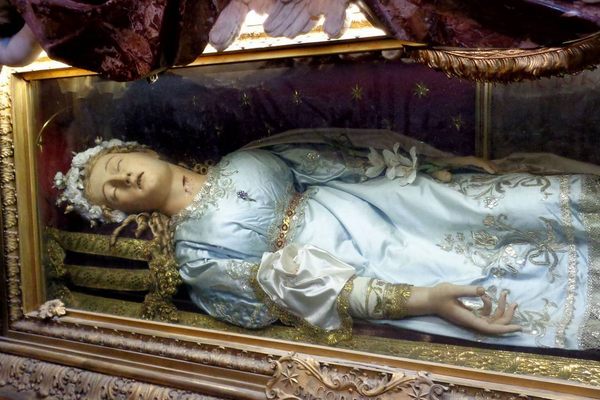About
At the insistence of architect Ricardo Robina, during the remodeling of the old Cuernavaca Cathedral, south of Mexico City, in 1957, layers of the walls were peeled back to the original stucco. The process revealed the remains of impressive frescoes.
The paintings illustrate the history of the first Mexican Catholic saint, Philip of Jesus. According to history, he was traveling from Manila to Mexico to be ordained when his ship ended in up Japan. On suspicion of a plot to invade Japan, he and his group were arrested and eventually executed.
The mural represents these last moments. At the entrance to the cathedral, one can see the boats with the friars on the way to what is now Nagasaki. Opposite, they are shown being paraded through the streets of what are now Kyoto and Osaka. And next to the tabernacle is the scene where they are crucified and pierced with spears. Philip himself gets two.
Philip was martyred on February 5, 1597, and it is believed that the mural was made between 1628 and 1697. The curious thing about the mural is that it does not represent Japan or Japanese people. The Japanese figures actually resemble the Chinese who used to visit the markets of Manila, a Spanish colony at that time, with a trade route to Europe that passed through Mexico.
One theory to explain this states that the murals were created in the Techialoyan style. That is to say, they were made by indigenous people with a mix of European and pre-Hispanic imagery.
The anatomical proportions are sensational and the details quite curious. To preserve them from light damage, in the 1960s, sculptor Mathias Goeritz provided the cathedral with darkened stained glass windows, criticized at the time for providing light more suited to "a cabaret."
Related Tags
Know Before You Go
Tuesday to Friday from 10:00 a.m. to 2:00 p.m. and from 4:00 p.m. to 6:00 p.m.
Saturdays and Sundays from 10 a.m. to 5 p.m.
Free entry
It is recommended not to visit the site while the Catholic worship is celebrated.
Yucatan: Astronomy, Pyramids & Mayan Legends
Mayan legends, ancient craters, lost cities, and stunning constellations.
Book NowPublished
June 1, 2020




































